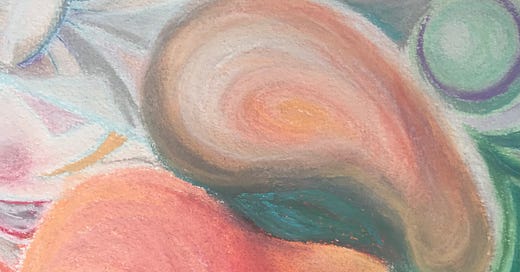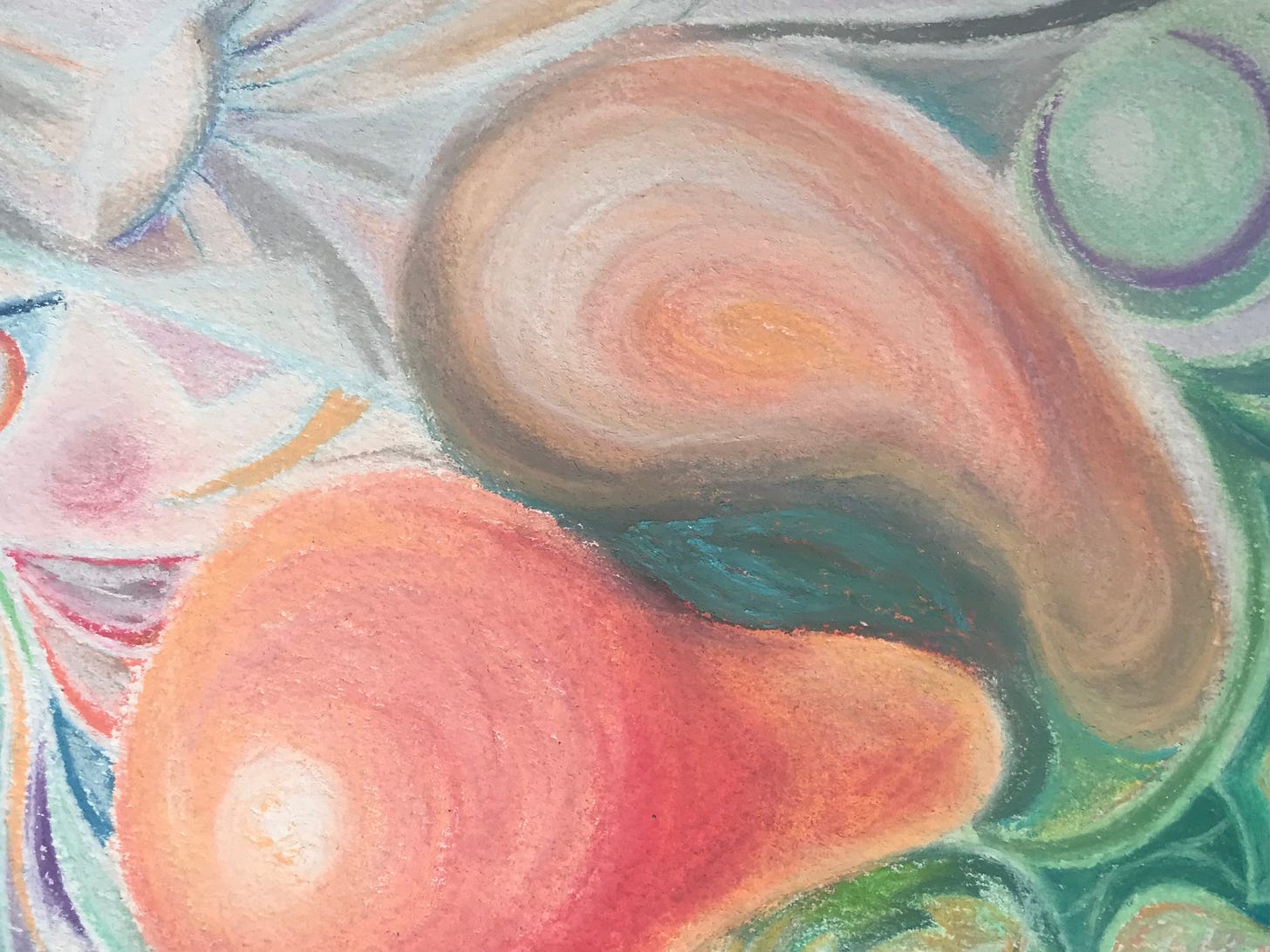The Promise of Immortality, Part 3
Hacking aging: from intermittent fasting to blood transfusions
Welcome to the final installment of this three-part series. If you missed the first two, Part 1 discusses the mechanisms of aging and Part 2 outlines some of the proven strategies to slow down biological time. Today, I am covering alternative (and perhaps somewhat out-there) approaches to longevity, many of which are being actively pursued as therapeutic avenues.
Prologue
In ancient Greek mythology, ambrosia is the food of the gods that confers longevity or immortality. We’ve already established that it is actually the lack of food that encourages our bodies to live longer, but let’s put that aside for a second. The dream of conquering aging is as old as humanity itself. In many ways, seeking to escape the mulling jaws of time is our attempt to reach divine status.
Humans are the only species on our planet that is trying to change the rules of life. We have dramatically alerted our environment and expanded the boundaries of our physical and intellectual abilities. In many ways, we are already god-like. Our desire to preserve our youth is a response to the new world where we can live happier, more fulfilled lives and experience so much more than our ancestors ever did.
We are already living much longer, thanks to medicine, sanitation and all the other conveniences of the modern world. Our bodies, however, are not made to keep up with our desire to travel the world after we retire or, better yet, to see the Pale Blue Dot as a space tourist. How wonderful it would be if we could reclaim the vitality of your twenties or thirties without giving up the wisdom (and retirement savings) you’ve gained by living through those decades!
People will try all sorts of remedies in an attempt to slow down aging. Biohackers are doing intermittent fasting, special diets, supplementing with hormones and active biological molecules, ice baths, hot saunas and more. Some are even turning to more extreme practices, like transfusions of young blood, in a quest for longevity.
The elixir of youth
Parabiosis is a gruesome practice where the blood circulatory system of two animals is surgically connected. Heterochronic (different age) parabiosis experiments made a splash in the early 2000s, when researchers at Stanford published a study where they connected the blood systems of a young and old mouse. They showed that molecular factors in the young mouse’s blood could reverse liver and muscular dysfunction in the old mouse. They hypothesized that these factors signal our cells to behave age appropriately and called them ‘chronokines’ (or ‘messengers of time’ in a rough translation from Ancient Greek).
This experiment gave some folks an idea: what if blood from young people is the key to longevity? This idea is not new. Drinking blood as a way to gain immortality is described in mythological tales and even historical accounts. The physician of Pope Innocent VII in 1492 bled three young boys to try to save the life of the dying holy man. Unfortunately, the only thing it accomplished was the death of all four of them. Vampire tales inspired by blood-drinking rituals practiced in the shadows throughout centuries haunt our imaginations. Shockingly, the practice persists even today—BBC has a mind-blowing reportage on that.
Most people, however, would not want to imitate vampires. Lucky for them, the beneficial properties of young blood can be harnessed in a more ‘civilized’ manner: using blood transfusions. For example, a startup called Ambrosia (a homage to the Greeks) provided young blood transfusions for a modest cost of $8,000 until FDA shut them down in 2019. This did not stop the true blood believers, however. The tech billionaire Bryan Johnson, who is running his own experiment on lifespan extension, routinely receives transfusions from his teenage son.
It’s not like young blood has some kind of magical properties. Blood contains many different components: from red blood cells that carry oxygen from the lungs to tissues to thousands of other different molecules, like small peptides and RNAs, floating in our plasma. By comparing the young and old blood, researchers can figure out what specific factors act as messengers of age. Theoretically, finding drugs that can increase or decrease them in our own blood—or making the factors themselves and giving them to people as a therapy—could help keep us younger longer.
This is the direction many longevity startups are pursuing. Spanish pharma company Grifols which makes blood plasma products has opened a subsidiary branch dedicated to developing longevity treatments. The company (called Alkaherst after the alchemical concept of a universal solvent and a cure for all diseases) has already selected several therapeutic targets among the markers they had identified. Several of them are currently in Phase II clinical trials for age-related diseases like Alzheimer’s, Parkinson’s and Age-Related Macular Degeneration.
Epigenetic magic
Besides blood transfusions, Bryan Johnson’s $2-million-a-year anti-aging routine also includes high-intensity workouts, cold therapy and about a hundred different supplements worth $1000 a month. To track his progress, he obsessively monitors his physiological parameters and claims that thanks to these interventions, he is aging slower than most 20-year-olds. Maybe he is right: each part of his protocol has science to back it up—and each is a potential therapeutic route for longevity treatments.
For example, supplements like resveratrol help reduce oxidative stress in cells, stimulate cardiovascular health and lower inflammation. Similarly, cold therapy is practiced by athletes and biohackers for its anti-inflammatory benefits. Like fasting, it also helps remove damaged proteins from cells. The opposite of cold, treatments like saunas are also beneficial. They activate what are called ‘heat shock proteins’ in our cells that help prevent protein misfolding and regulate gene expression. This brings me back to the very beginning of this series: epigenetics.
Most of the changes that happen to us as we age are epigenetic—which means, by definition, that they are reversible. The difficult part is figuring out which ones of those are responsible for making us old and how to go after them. Our bodies are incredibly complex, and as we have already seen, the same treatment can be either good or bad depending on the context. Still, a growing number of antiaging companies, backed by people like Jeff Bezos and Sam Altman, are working on epigenetic reprogramming technologies.
To understand the biology of aging, some longevity startups compare the blood and tissues of young and old people trying to identify the epigenetic markers that make us age faster or slower. Others study the genomes of extremely long-living animals, like naked mole rats, to figure out what their secret is. Yet other ambitious projects focus on reprogramming, or reversing, aging cells using stem cell factors. If even one of these projects succeeds, a longevity treatment could become the most blockbuster drug of all time.
But we are not there yet.
I wish I could tell you something more exciting, but for now, scientists are still working on it. In the meantime, other biotechs are focusing on a more humble and realistic goal of improving the health span: a period of life that a person spends in good health. This includes diagnostics and prevention strategies such as using continuous glucose monitors to help you track your blood sugar and kick in that autophagy.
Epilogue
We are no gods, but we are pushing the limits of what it means to be human. People who are about my age and younger today will likely live to 120 years. And it is very likely that we will be able to harness the fruit of longevity research and taste the ambrosia made from it.
However, would lifespan preservation just become an endless chore, having to wake up every morning in anticipation of the same monotonous regimen of intermittent fasting, blood transfusions and cold therapy? And if scientists did develop a longevity pill, I imagine the price of the drug would be astronomical. It would be a treatment that “rejuvenates the creaking but wealthy, shrivelling bodies of ageing billionaires” as Siddhartha Mukherjee put it. As for the rest of us, we would be assigned a limited number of years on Earth so as to not consume too many resources.
Even if we could restore the youthful biochemistry of your cells, are we really turning back the hands of time? Because youth is not only how fast you can run or your ability to pull off all-nighters. It is—more than anything else—a state of mind. The way of looking at things with the fresh gaze of a child discovering the wonders of life for the first time. The thrill of driving your first car, moving out of your childhood home and into the mysterious wide world, falling in love and having your heart broken. None of that can be replicated.
My friend told me the other day that his 96-year-old grandmother (who is still going strong and is in perfect cognitive health) confined in him that she felt burdened by the weight of all the memories she had collected throughout her life—the good and the bad, like a memory drive running out of storage. Maybe this is the reason why we are not meant to live forever?
We might be able to slow down aging but we cannot stop time. Yet, the relentless march of time is what gives us an appreciation for every day we have here on Earth. Isn’t that what it’s all about?





A really interesting series here. I especially appreciate the philosophical element of the epilogue at the end. I think any discussion of longevity and anti-aging research would benefit from a "should we?" as well as a "could we?" !